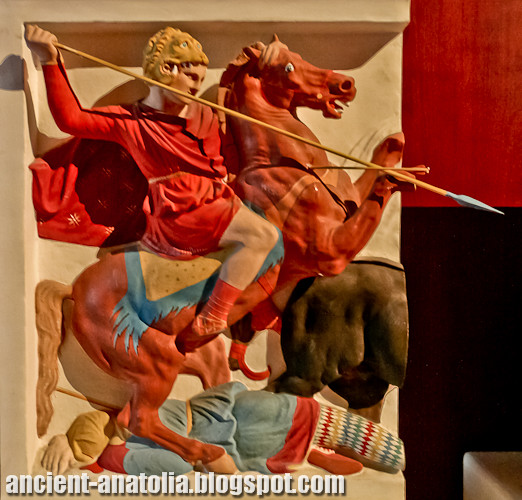
Color reconstruction work of detail on one of the long sides of the Alexander Sarcophagus at Istanbul Archaeology Museum. The carvings on this side of the piece depict Alexander fighting the Persians at the Battle of Issus. Volkmar von Graeve has compared the motif to the famous Alexander Mosaic at Naples, concluding that the iconography of both derives from a common original, a lost painting by Philoxenos of Eretria. Alexander is shown mounted, wearing a lionskin on his head, and preparing to throw a spear at the Persian cavalry.
The "historicity" of the figures accepted by von Graeve seems to Karl Schefold to be less stressed than the mythic content of battle and royal hunt, but some scholars believe that a second mounted Macedonian figure near the center represents Hephaestion, Alexander's older close friend. A third mounted Macedonian figure is often identified as Perdiccas.